I am harvesting energy from an NFC device using a tuned antenna on my PCB. Through this method, I am able to generate about 3.05V. I would like to charge a super capacitor using the power harvested from the NFC device. To do this I have used the simple diode circuit provided here (and shown in Figure 1 below.)
The problem I am facing is my circuit requires a minimum of 3V to operate within operating conditions, however with the added drop by typical diodes I believe there with be various situations where the generated voltage will drop below the required 3V. Are there any diodes available which have ultra low voltage drops of less then 0.01V? Is that even possible?
Please note:
- my system load will be < 5mA
- The 3.05V generated was without a diode in the circuit
